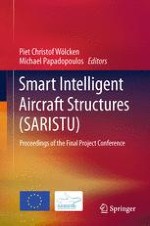2016 | OriginalPaper | Buchkapitel
Fabrication of Carbon Nanotubes-Doped Veils
verfasst von : Paulina Latko, Anna Boczkowska
Erschienen in: Smart Intelligent Aircraft Structures (SARISTU)
Aktivieren Sie unsere intelligente Suche, um passende Fachinhalte oder Patente zu finden.
Wählen Sie Textabschnitte aus um mit Künstlicher Intelligenz passenden Patente zu finden. powered by
Markieren Sie Textabschnitte, um KI-gestützt weitere passende Inhalte zu finden. powered by
